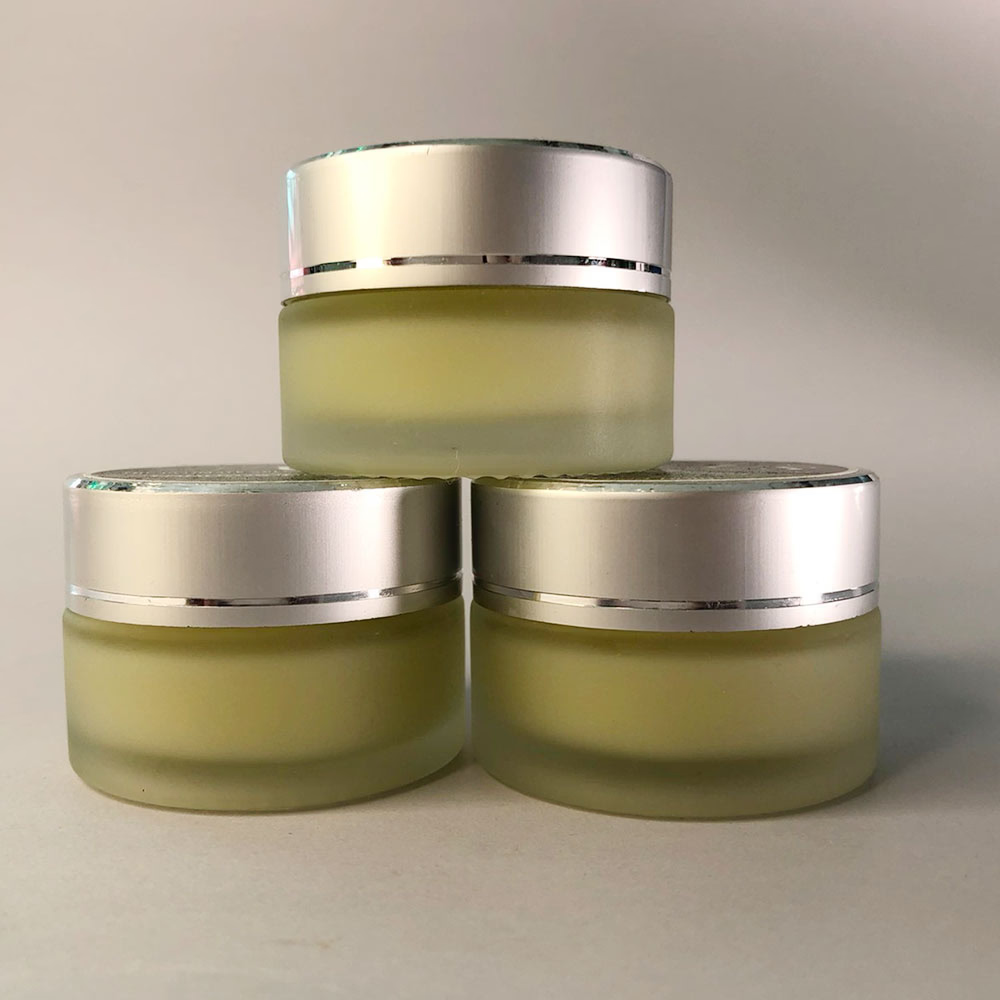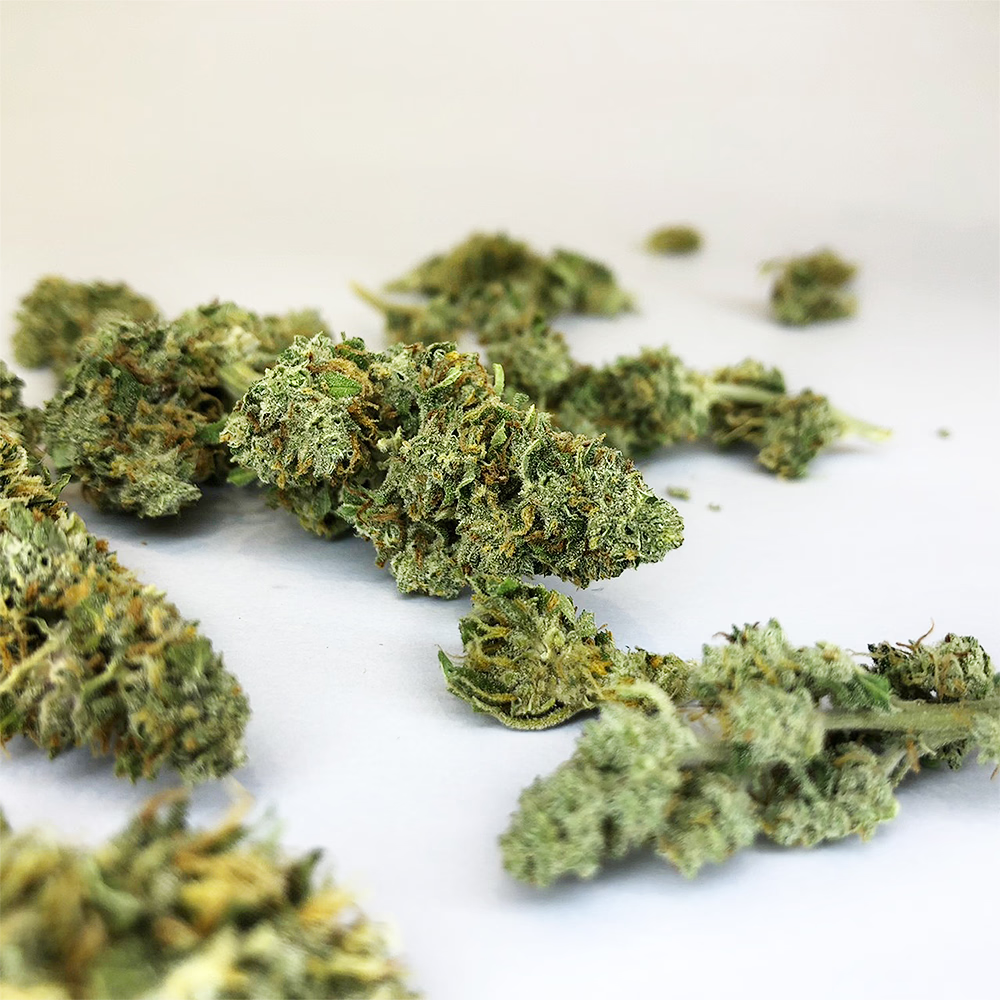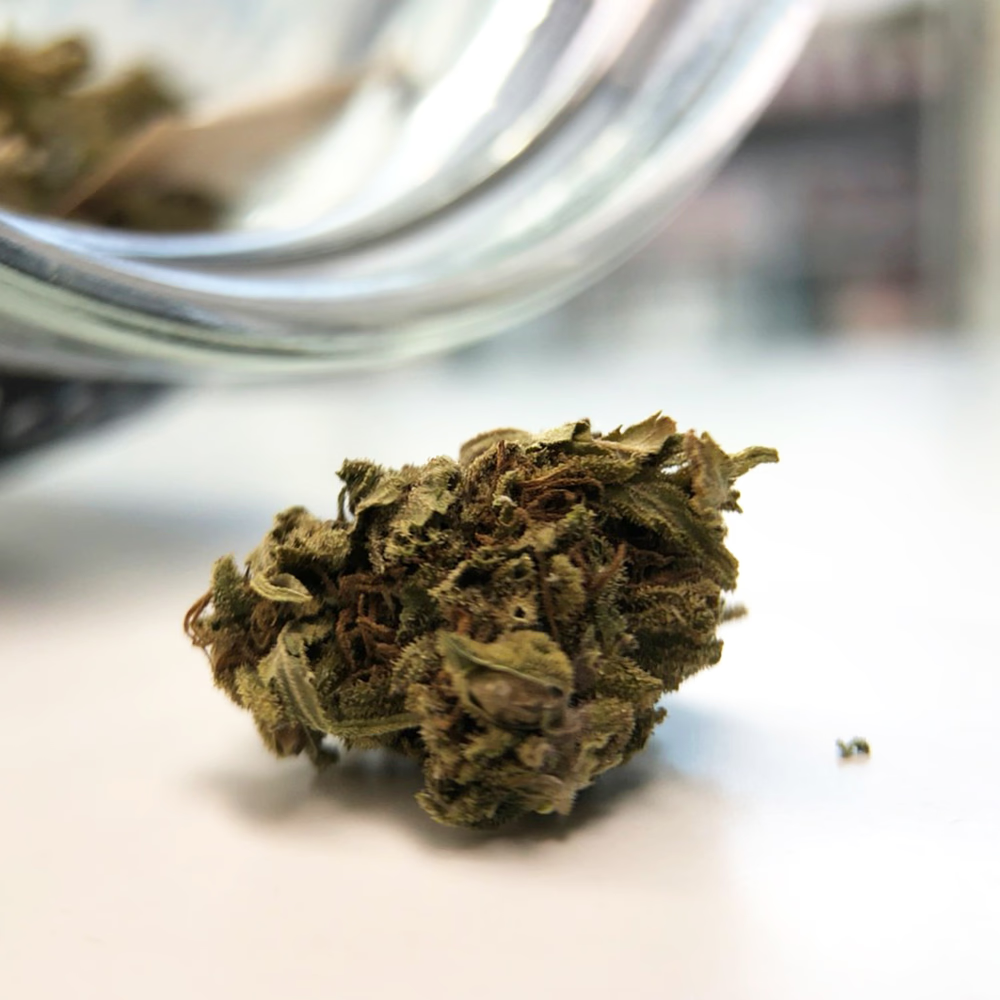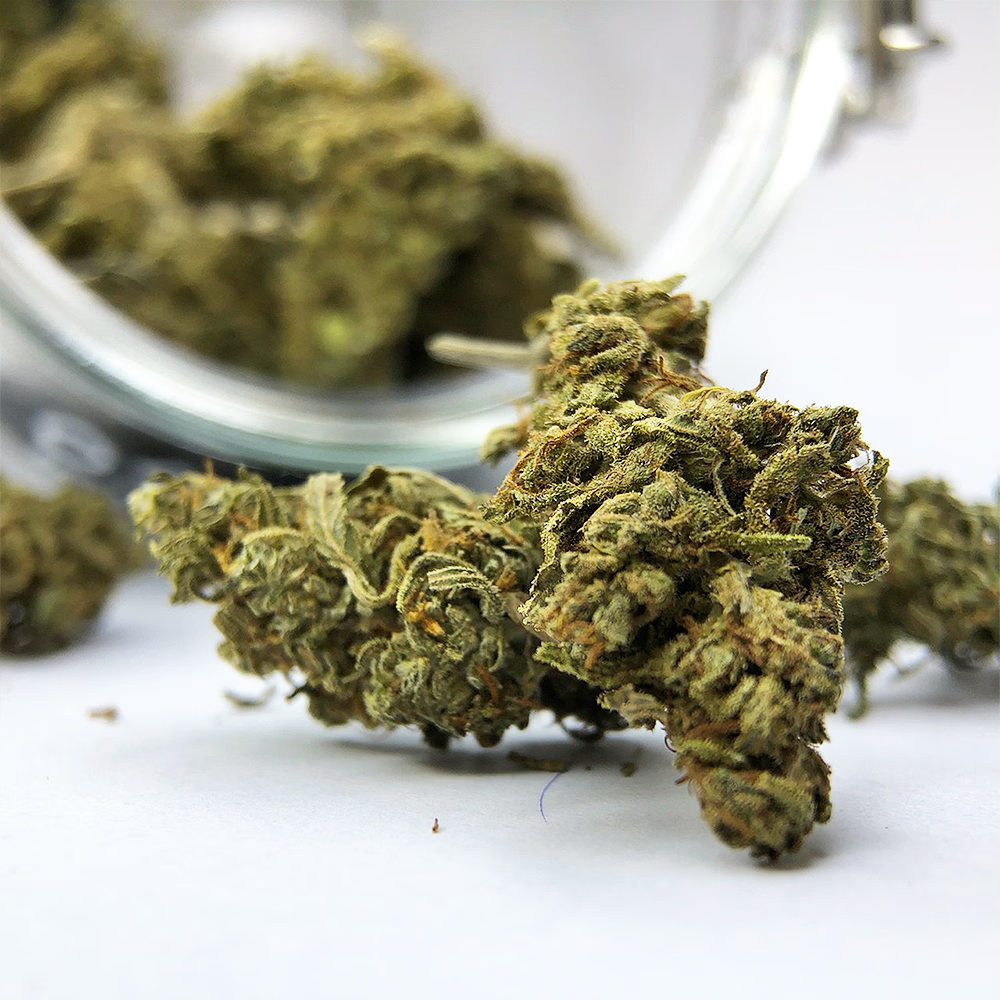Choosing the Right Water for Your Plants
What pH levels promote the best growth of your cannabis plant
Benefits and Drawbacks of Using Distilled Water on Cannabis Soils
Using distilled water on cannabis soils has several advantages.
Advice for Keeping the pH Levels of Cannabis Plant Water Balanced
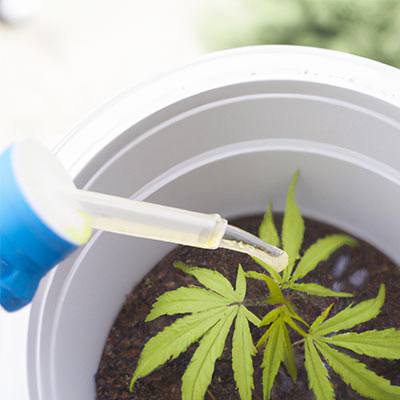
The best water to grow organic cannabis in the soil
Organic cannabis plants in soil need appropriate water to stay strong and flourish. For your plants, too much or too little water, or water with the wrong minerals, might have unfavorable effects. However, if you provide your organic cannabis soil-based plants with the appropriate water, you will be rewarded with robust development and generous yields.
Choosing the Right Water for Your Plants, Let's examine the ideal water source for organic cannabis plants grown in soil.
The absence of salts and other additives is crucial when choosing the best water for your organic cannabis soil-based plants. Chlorine, fluoride, iron, calcium, magnesium, and other minerals found in tap water from most cities are not suitable for growing cannabis.
If possible, use reverse osmosis (RO) filtered or distilled water. Distilled water is safe to use on plants because all of the minerals have been removed, but it can lead to shortages because it lacks vital trace elements and minerals that plants require, so it's better to add some back in before using it on your crop.
Most undesirable minerals are removed from reverse osmosis (RO) filtered water, and you have more control over which ones you add back in before watering your plants.
There isn't a one-size-fits-all solution regarding the pH levels in the water used for organic cannabis soil-based plants because different strains have distinct preferences based on their particular needs. However, depending on the strain you are growing, the ideal pH level range may need to be adjusted. Some strains prefer lower or higher levels than this range; always check before making any changes, as too much deviation can result in a nutrient lockout, stunted growth, and poor yields in extreme cases.
Suppose you discover that the pH level of your tap or RO-filtered water doesn't fall within this range. In that case, many products on the market are made specifically for balancing out pH levels, such as PH Up/Down solutions, which are simple to use and only require a few drops each time you need to make adjustments.
However, always test before applying anything that could harm your crop if the wrong dosage amounts are misapplied!
The best water to grow organic cannabis in the soil; the ideal water for organic cannabis soil-based plants also depends on temperature. Some strains like cooler temperatures, while others do better in warmer regions. Because this varies between strains, check before using any additional heaters or coolers.
However, anything at or near room temperature would generally work here. However, being too cold could shock them into dormancy if you're not careful.
In the end, there isn't just one "best" type of water that is suitable for all types and strains of organic cannabis soil-based plants, but rather a variety of options that may be more suitable based on personal needs and preferences. Distilling and RO filtering are two top contenders, along with appropriately adjusting pH and temperature levels when needed.
Just keep in mind to constantly double-check before applying anything to them in case they don't respond favorably owing to application process errors that could wind up spending necessary time & resources needlessly in the future if not done correctly. Happy gardening, everyone, and best of luck with your incredible outcomes.
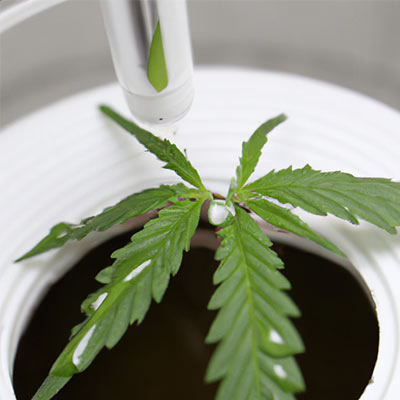
Recognizing the Various Water Types for Growing Cannabis
Water is one of the most crucial ingredients in the cultivation of cannabis. But it might be challenging to determine which water is best for your plants given the wide variety available. The different types of water that are accessible and how they can impact your cannabis growth process will be discussed in this post.
Tap Water: For most cannabis plants, tap water is the most practical option because it is widely accessible and reasonably priced. However, depending on where you live, the tap water you use can be contaminated with high concentrations of fluoride, chlorine, or other chemicals that could harm the health of your plants. To ensure that your tap water has these substances in appropriate amounts before using it on your plants, you should test it first.
Reverse Osmosis (RO) Water: To create RO water, ordinary tap water is run through a filter that eliminates dissolved particles like salts and minerals. Due to its low nutrient content and pH level, this water is frequently utilized in hydroponic systems. It has a lower mineral concentration than conventional tap water (which helps promote healthy root growth).
Distilled Water: Pure H2O molecules remain after boiling conventional tap or RO water until all contaminants have been eliminated through condensation and evaporation. Since distilled water has no minerals or nutrients, it shouldn't be used as the primary source for watering cannabis plants since they need essential nutrients and trace elements for optimal growth. However, some growers use distilled water when flushing their plants during harvest to help remove any excess nutrient buildups in their soil or hydroponic systems.
Rainfall: Besides being free, rainwater also has fewer pollutants than conventional tap water because it hasn't undergone any chemical treatment, such as adding salts or chlorine, before reaching your planters or garden beds. Rainwater typically has a slightly acidic pH level, which can help plant roots more easily absorb some nutrients. Just be sure to check the pH level before using it too frequently on your plants because acidic levels that are too low can eventually stunt their growth if not adequately monitored!
Well Water: If you are fortunate enough to access healthy water from underground sources like aquifers, you have access to naturally filtered groundwater devoid of any extra chemicals like chlorine or fluoride! However, before using well water on your cannabis plants, check their pH level carefully because some places may have high iron levels that, if not treated first through suitable aeration procedures, can lead to problems with nutrient absorption.
In conclusion, there are many types of water suitable for growing cannabis. A tap, RO, distilled, rain, or healthy water will all offer different benefits depending on the type of results you want from your crop, so make sure you understand what characteristics each offers before making a decision.
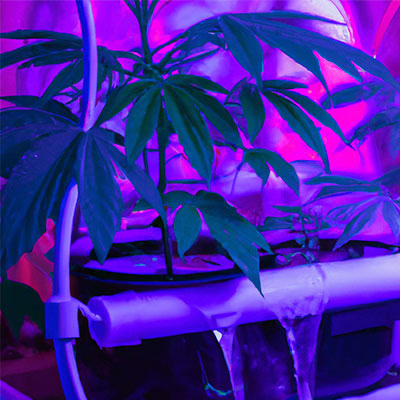
What pH levels promote the best growth of your cannabis plant
The potential of Hydrogen, or pH, is a measurement of the acidity or alkalinity of a specific solution. For cannabis plants to grow and thrive, the pH levels must be ideal. Cannabis plants can access the nutrients in their soil or water without becoming too acidic or alkaline; a pH level between 6 and 7 is considered appropriate. You can ensure your cannabis plant thrives and produces high-quality buds by knowing the significance of pH levels.
The pH of your cannabis plant can be measured relatively simply. You need digital measuring equipment to accurately measure the quantity of acidity or alkalinity in your soil or water solution. Once you have the instrument, you should be able to accurately determine the pH level of your soil or water by inserting a sample into the testing chamber. For optimum results, make any necessary adjustments to your soil or water before planting or watering your cannabis plant.
The majority of cannabis plants, as previously mentioned, prefer a slightly acidic environment with a pH range between 6 and 7. This range ensures that all essential nutrients are readily available and accessible to your plant without being too acidic or too alkaline, which could stunt growth and significantly lower yields.
While most strains thrive within this range, it's essential to remember that some strains might prefer lower (more acidic) levels while others might perform better with slightly higher (more alkaline) levels. Be sure to research your strain in advance, to know what kind of environment will produce the best results when growing it.
PH levels are essential to the proper growth of cannabis plants. Understanding how PH levels function and how they need to be changed will ensure successful harvests every time. In addition, think about using natural materials like composted manure and coffee grounds if needed rather than relying solely on chemical solutions like sulphuric acid, etc., which may not always be necessary depending on existing conditions.
Be sure to test your soil/water regularly so you know what adjustments need to be made to reach optimal ranges before planting/watering! Growers shouldn't have trouble getting healthy harvests every time if they take the necessary precautions when regulating PH balances! Still, each has unique properties that must be considered when deciding which type will work best for your specific setup.
Benefits and Drawbacks of Using Distilled Water on Cannabis Soils
Distilled water on cannabis soils is one of the most frequently discussed topics in cannabis production. As with any subject, utilizing distilled water on cannabis soils has both advantages and disadvantages.
Producers should be aware of both to make an educated choice regarding their growth setup. Here, we go over the advantages and disadvantages of using distilled water on cannabis soils so that you can decide if it's appropriate for your growing environment.
Using distilled water on cannabis soils has several advantages.
Distilled water is free of impurities such salts, minerals, metals, and other dissolved compounds that can lead to soil nutrient imbalances. This keeps nutrient levels at a healthy level, which will result in healthy plants.
Because distilled water is flavor- and odor-free, it won't change the flavor of your finished product.
Because distilled water is pH neutral, unlike conventional tap water, which might vary depending on its source, it won't unexpectedly alter the pH balance of your soil.
Distilled water won't evaporate and leave behind any residues as regular tap water may because it doesn't include chlorine or other additives. This maintains the cleanliness of your soil and avoids salt buildup over time (which can be detrimental to plant growth).
If you select this alternative, you won't have to spend a fortune setting up your grow system because it is reasonably cheap in comparison to other types of filtered waters like reverse osmosis systems.
Using distilled water on cannabis soils has disadvantages.
Even though distilled water has through a distillation process to remove most impurities, there may still be minute levels of some toxins that, if allowed to accumulate over time by just using distilled water to water your plants, could endanger them.
Since distilled water is completely devoid of minerals and nutrients, you'll need to manually add fertilizers or supplements to the soil to supply these essential components (or via drip irrigation).
Otherwise, vitamin deficits in your plants could cause stunted development or even worse.
In addition, as distilled water contains no minerals at all, it lacks buffering power, which could cause rapid pH fluctuations if closely monitored (and corrected quickly if needed).
This is due to the fact that in the absence of buffering agents, nothing is capable of "absorbing" abrupt oscillations brought on by outside variables like fertilizers given directly to the soil, etc.
Advice for Keeping the pH Levels of Cannabis Plant Water Balanced
A regulated pH level in the water used for irrigation is crucial for producing cannabis. Because the pH of water obtained from soil can frequently vary. Your plants may suffer from nutrient deficits or even die if the pH of your water is wrong. It's crucial to ensure you routinely check and modify the pH of your irrigation water to maintain your cannabis plants healthy and growing.
Here are some tips for adjusting the pH levels of soil-derived water used in cannabis cultivation:
Test Your Soil and Water: Identifying the pH levels of water derived from the soil is the first step in balancing them. Before you begin adding any chemicals or nutrients to your growing medium, you should utilize a high-quality soil test kit to determine the pH level of the medium's natural state. Any source water you utilize for irrigation should also have its pH level measured. You may then estimate how much adjusting might be required before applying it to your plants.
Add Lime or Sulfur: You might need to alter the levels with either lime or sulfur depending on the outcomes of testing your soil and source water. If your test results are low, you should add lime to enhance the acidity. Conversely, you should reduce the alkalinity by adding sulfur (i.e., if a high number appears on your test). Minor additions to both products should be made until desired outcomes are attained. It's better not to overdo it here because adding too much lime or sulfur can lead to more issues in the future.
Use Reverse Osmosis Filtering Systems: If you have access to them, reverse osmosis filtering systems can aid in removing undesirable substances from tap water sources, such as chlorine and heavy metals before they get to your plants' roots. Additionally, this procedure aids in removing surplus minerals that may otherwise upset the balance of the plant and possibly compromise the health of the plant as a whole.
Use Commercial Solutions: Several commercially available items are made expressly to assist users in controlling the atmosphere of their grow room, including its pH levels! Follow the directions on the packaging for the most outstanding results, as these solutions typically come pre-mixed with all necessary chemicals already included, eliminating the need for guessing when determining how much lime or sulfur has to be added to each batch.
Modify Your Feeding Schedule As Necessary: Once a new balance has been achieved within the nutrient solution, you should also consider modifying your feeding schedule as necessary. This is in addition to changing the content of your nutritional solution. Just the right amount of nutrients are needed to develop cannabis, so maintaining a consistent feeding schedule that accounts for newly adjusted levels can assist assure optimal growth without going overboard.
These suggestions can help producers be more prepared to maintain the proper pH balance in their irrigation solutions from soil sources while growing cannabis indoors (or outdoors).
However, remember that you should always exercise additional caution when working with chemicals like sulfur and lime because they can have adverse effects if mishandled. As such, always take all essential safety measures before starting any experimentation.
